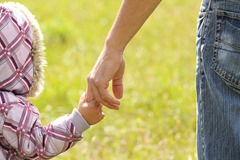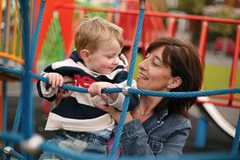Adoption, care and families
 A rising number of children are needing care outside their immediate family. Peter Cheney examines the different types of care available and the policy debate on improving their life chances.
A rising number of children are needing care outside their immediate family. Peter Cheney examines the different types of care available and the policy debate on improving their life chances.
Debates around adoption and family breakdown are, by their nature, emotive.
The most common reason for taking a child into care is to protect them from abuse or neglect although the parent may also be absent or unable to cope due to illness. The number of children who had been in care for at least 12 months stood at 1,878 in September 2012, and had steadily increased from 1,626 in 2007. Within this group, the types of care provided were as follows:
• 1,392 in foster care;
• 276 placed with a parent or family;
• 149 in children’s homes; and
• 61 in other accommodation.
Living without a family has a profound impact on a child’s life chances. Just 20 per cent of children in care sitting GCSEs achieved five good passes in last year’s exams, compared to 78 per cent in the general school population. A tenth of children leaving care already have a caution or conviction, with those in residential care being most vulnerable.
Adoption
Nowadays, new born children are rarely adopted. The cases each year tend to be in single figures. The typical adoption involves an older child who is already in care. Social workers do not see adoption as the most appropriate course for every child in care. They view it as a last resort if the family cannot be reunited.
Around 100 children in care were adopted each year in the early 2000s. This number subsequently halved although the number of adoptions is slowly increasing:
• 50 in 2010;
• 55 in 2011; and
• 60 in 2012.
The most recent figures are for November 2013 and indicate that there are more adoptive parents than children waiting for adoption. In that month, 57 children were eligible for adoption but had not been placed with an adopter. Ninety-three parents, who were approved to adopt, were waiting for a child to be placed with them.
“These figures represent a snapshot in time,” a departmental spokeswoman said. “Matches between children and adopters are being made on a daily basis. There is the potential for any of the 57 children awaiting placement at that point in time to be matched with any of the 93 placement opportunities.”
On average, an adopted child has been living in care for three and a half years. The adoption process usually takes two years but can take longer if more checks are required.
A draft Adoption (and Children) Bill, designed to improve the adoption process, was approved by the Executive in May 2010. It includes statutory timetables for court proceedings and the option of special guardianship, which allows birth parents to have some continued responsibility.
However, the Bill has been held up by a case taken by the Human Rights Commission on behalf of a same-sex couple which was contested by the Department of Health, Social Services and Public Safety.
At present, married couples and single people are allowed to adopt children. This was outlined in law by the Adoption (Northern Ireland) Order 1987 and, at present, almost all adoptive parents are married couples.
Adoption by same-sex couples is legal in 12 out of 50 European countries, mainly in Western Europe. It is permitted in Britain and the Republic of Ireland plans to liberalise its law next year.
 The conservative viewpoint is that marriage is the best setting for bringing up children. The Centre for Social Justice’s Breakthrough Britain paper indicates that 43 per cent of co-habiting parents split up before a child’s fifth birthday, compared to 8 per cent of married parents.
The conservative viewpoint is that marriage is the best setting for bringing up children. The Centre for Social Justice’s Breakthrough Britain paper indicates that 43 per cent of co-habiting parents split up before a child’s fifth birthday, compared to 8 per cent of married parents.
Liberal commentators contend that unmarried couples, including same-sex couples, can provide the same quality of care. They cite research by the American Psychological Association, peer-reviewed by the University of Virginia’s Charlotte Patterson.
Social workers must assess whether the proposed adoption, in each case, will be in the best interests of the child, “safeguard and promote” the welfare of the child throughout his or her childhood, and provide a “stable and harmonious” home.
Public opinion on same-sex adoption is mixed. In the 2012 Life and Times Survey, 39 per cent of respondents approved of allowing lesbian couples to adopt children but 29 per cent disapproved. An equal percentage (36 per cent) would approve or disapprove of an adoption by two men. The rest of those responding expressed no clear view.
Sinn Féin, the SDLP and Alliance support same-sex and unmarried adoption. The DUP is opposed and the issue is a matter of conscience within the UUP.
The High Court ruled in favour of the Human Rights Commission on 18 October 2012 and the Court of Appeal dismissed an appeal on 27 June this year.
The Supreme Court refused permission for a further appeal on 22 October and the High Court’s judgment took effect on 11 December. The focus will now move to the Adoption Bill, which the Health Minister intends to introduce in 2014.
The British Association for Adoption and Fostering says that the current procedure of freeing orders is outdated and stigmatises birth parents. It wants to see better preparation for adoptive parents as they will be often receiving children who have experienced neglect or trauma.
Kinship
The adoption case is only part of a wider debate on how best to support families and prevent breakdown in the first place.
Many foster care placements are provided through kinship care i.e. where a child is cared for by a relative. DUP MLA Michelle McIlveen says that these carers are “often overlooked” and she wants the informal networks involved to be properly recognised.
“Kinship care arrangements can be confusing because not all children in kinship care will be looked after children but many will simply be families making arrangements during a time of crisis,” McIlveen has remarked.
Anecdotal evidence suggests that as many as 5,000 children may receive kinship care and that the number is increasing.
Formalised kinship care would allow for a transfer of parental responsibility (where necessary) without the need for a court order.
The churches have a close interest in family policy as they provide most youth and children’s work in Northern Ireland (around 68 per cent) and perform a similar proportion (69 per cent) of marriages.
In September, the Catholic Church established a Council for Marriage and the Family to discuss policy in those areas. The Evangelical Alliance has suggested that the Executive introduce a ‘relational impact assessment’ for all new policies to identify any negative impacts on families. It has also proposed an all-party group on family and well-being, which could discuss policy in a less confrontational setting.





